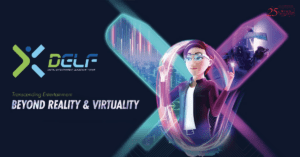Does the name Alexa ring a bell? How about Siri? Guess what they have in common? With Eliza, Parry, Jabberwacky, Dr. Sbaitso, and Alice? They are all chatbots. A chatbot is a computer program that simulates human conversation on a digital device. It works by entering the user’s word into a computer then pairing them to a list of scripted responses.
A Peek on Chatbot’s Past
Joseph Weizenbaum created Eliza in 1966 and was the first chatbot in history. He designed it to mimic a psychotherapist. Kenneth Colby constructed Parry in 1972. It imitated a patient with schizophrenia. This chatbot was the first to pass the Turing Test. In 1988, Rollo Carpenter designed Jabberwacky, an AI intended for entertainment. In 1992, Creative-Labs created Dr. Sbaitso. It’s a voice-operated chatbot that converses with the user like a psychologist. In 1995, Richard Wallace constructed Alice. It imitates a young woman and answers the user’s dialog.
Apple formed Siri in 2010. It’s an intelligent personal assistant and learning navigator. Google followed launching Google Now in 2012. It answers questions and makes recommendations through predictive search. In 2014, Microsoft demonstrated Cortana, a chatbot that responds to voice commands. In the same year, Amazon developed Alexa. Alexa became most household’s aid and personal assistant. It can play music, search the web, set alarms, control your smart-home products, and more. Today, there are 15,000 Alexa skills available, with the list growing fast every month.
Chatbots in 2020
There are more than 300,000 Facebook Messenger Chatbots in the market today. You can use them to request a ride from Lyft. You can search for recipes at Wholefood’s bot. Fandango’s chatbot lets you watch a movie trailer. It can find local theaters by entering your zip code. Spotify’s bot recommends a playlist based on your mood. And you can get makeup tutorials if you chat with Sephora.
Chatbots are winning in seven big areas.
- Ecommerce is adding dollars to their bottom line by using chatbots. Messenger chatbots cost less but have higher open rates and click-through rates.
- Customer Service bots are a no-brainer with an almost instant return of investment. Mckinsey saved 29% on customer service costs by deploying chatbots.
- Travel industries are building a chatbot ecosystem. They engage the customer before, during, and after a trip.
- Fintech disrupted the financial services through chatbot mediums. JP Morgan’s COIN saved over 360,000 hours of manpower. Swedbank’s Nina handles 400,000 chats a month and resolves 81% client’s issues
- HR bots are also helping companies. Automation saves 30% to 50% of the time HR Reps spend answering requests and updates.
- There are chatbots you can hire to do a task for you. 45% of a job-related task is automatable. ROSS performs legal research for law firms. Tara.ai hires and manage developers for your tech project.
- Voice & IoT are becoming a hit. This year Alexa alone generated $10 billion of revenues in 2019. Text the Bonaverde Berlin, and it can make you a personalized fresh coffee.
A Peek on Chatbot’s Future
So, what does the future holds for the chatbot industry? As Google and Amazon continue marketing the smart speaker, voice-based chatbots will become more popular. We are likely to witness chatbots that understand what we speak. We can also expect a high adoption of AI-based chatbots in the news and media. Readers will no longer need to search for the latest news. Instead, they would receive personalized news recommendations. We will also witness the rise of adaptive chatbots. They train themselves and keep learning with every interaction. The most awaited advancement is a chatbot with emotional intelligence. A chatbot can become more human, and AI is the major activator. Companies started coming up with bots that can deliver personalized answers. It is becoming clear that they will be having more human-like bots.








